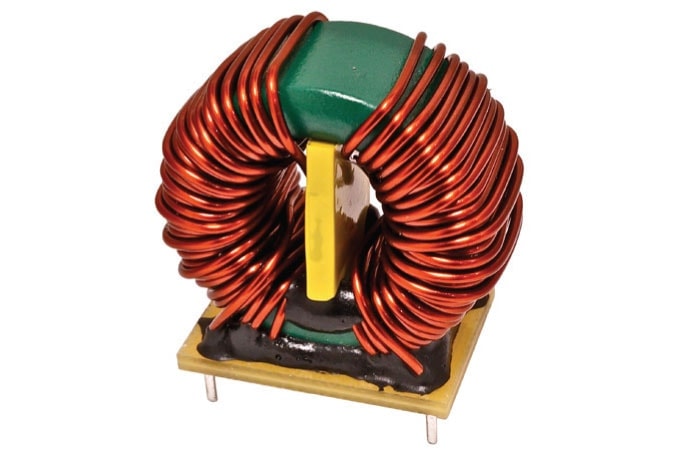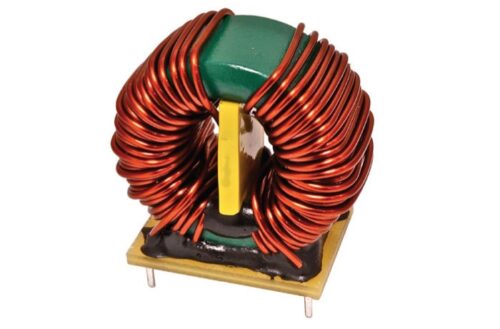A common mode choke is an electromagnetic component that blocks high frequencies by passing direct currents (DC) and alternating currents (AC) through an electrical circuit. The choke gets its name because it blocks or “chokes” high-frequency signals while low-frequency signals pass through.
This blog will cover the various aspects of common mode chokes and address frequently asked questions about their functionality.
What Are Common Mode Chokes?
Common mode chokes suppress electromagnetic interference (EMI) and radiofrequency current (RFI) from a power supply. EMI and RFI interference pose serious problems for electronic equipment, especially with a power-line communication system. Because common mode chokes protect equipment from frequency interference, they’ve become essential in the industrial, electrical, data-processing, manufacturing, and telecommunication sectors.
However, common mode chokes aren’t limited to just commercial applications. Many everyday consumer products have a common mode choke, including:
- LCD panels
- Power cables
- USB drives
- Computers and laptops
- Monitors
Controller area networks (CAN) and local area networks (LAN) also rely on chokes so they can function properly. A CAN is a robust system that connects multiple users through a microcontroller, without using a host computer. A LAN is a computer network that connects devices within a local area, typically an office building, school campus, or house. For both network types to operate efficiently, technicians must keep electromagnetic interference and electrostatic discharge at a minimum—which is why the common mode choke is so essential.
How Do Common Mode Chokes Work?
A common mode choke has two wires wrapped around a ferrite or magnetic core. It functions by using two fundamental processes: steering the noise current in the same direction across both wires, while simultaneously generating a magnetic field with two or more windings. Combined, these two mechanics add flux and prevent frequency noise by blocking the common mode current.
Within electrical circuits, electromagnetic interference can take the form of either differential mode noise or common mode noise. Differential mode noise occurs in closed-loop circuits where the current flows in the line and input sides run in opposite directions. In contrast, common mode noise occurs in circuits where the current flows in the line and input sides enter and exit in the same direction and return through a common ground. In both cases, the noise happens when the transmissions do not generate magnetic fields that are equal and/or sufficiently cancel or add together.
In an ideal common mode choke, the differential mode current produces equal but opposite magnetic fields as it flows through the choke’s windings. In doing so, the fields effectively cancel each other out, resulting in no differential mode noise and no loss of differential mode signal quality. Similarly, the common mode current creates equal and in-phase magnetic fields. These add up together and enable the choke to impede and attenuate the current flow as needed.
Common mode chokes have become more advanced and efficient in recent years. For example, new chokes contain crystalline cores, which are 8-10 times more effective than ferromagnetic and ferrite cores. These cores are also more compact and have a higher frequency range, reaching up to 300 Hz. Overall, EMI noise suppression increases when technicians use chokes with crystalline cores compared to traditional models.
What Are the Advantages of Using Common Mode Chokes?
There are numerous advantages to using a common mode choke in an electrical circuit, including:
- Increased efficiency
- High inductance
- Low-EMI radiation
- Blocked or suppressed high-frequency signals
Compared to a differential choke, a common mode choke can operate at much higher currents and has a higher inductance value, thus keeping EMI radiation at a minimum. Common mode chokes also have an extensive frequency range and are sometimes the only inductor that can solve connections with a lot of noise. Although they are generally more expensive than other inductors, common mode chokes make up for the price difference with their functionality and reliability.
Learn More About Common Mode Chokes at MPS Industries
Common mode chokes are a necessity for any operating network or system. At MPS Industries, we manufacture common mode chokes as well as many other electromagnetic components for a broad range of industries and applications. If you want the best for your operating system, reach out to us today to learn more about electronic chokes or another product.


